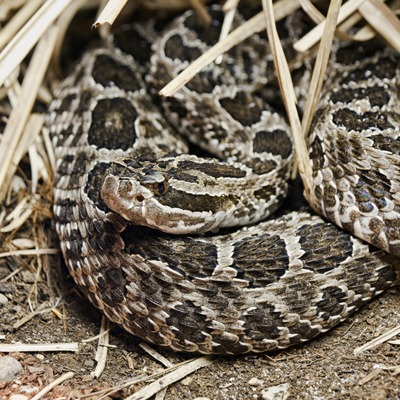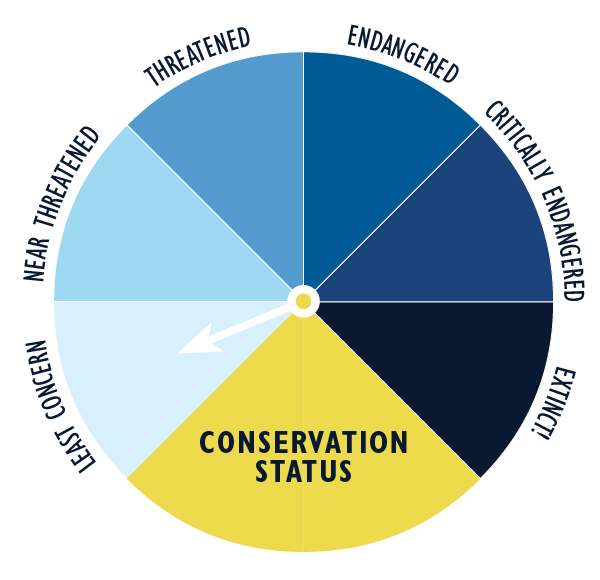
About Eastern Massasauga Rattlesnake
The eastern massasauga rattlesnake belongs to the pitviper group, which are members of the larger reptile family, vipers. As with all vipers, this rattlesnake has hollow fangs that are used to inject poisonous saliva, or venom, into their prey or enemies. These pitvipers also have sense organs on both sides of their head called ‘pits’, which are used to detect body heat in nearby areas. They use this ability when catching warm-blooded prey, which makes up a majority of their diet. The most recognizable feature, however, is the ‘rattling’ tail at the end of the snake, which is used to attract prey and signal danger when an enemy is nearby.
Habitat
Eastern massasauga rattlesnakes are usually found in damp lowland habitats such as swamps, marshes, wet prairies, and bottomland forests. They can be found throughout the central United States and as far north as Canada.
Diet
This rattlesnake feeds mainly on smaller mammals like mice and shrews. They are also known to occasionally eat other snakes, bird eggs, and insects when the prey is smaller and easier to take down.
Family Life
Eastern massasauga rattlesnakes are active from April through late fall and hibernate throughout the cold winter months. They tend to hibernate alone or in small groups, typically in lowland burrows near sources of water. This species also does not typically stray far from its usual hibernation site year after year. When they feel a sense of danger, the rattlesnake vibrates its rattling tail to signal potential aggression.
Conservation Status
The conservation status of the Eastern Massasauga Rattlesnake is classified as least concern.
Threats
- Two major threats to this species are human interaction and habitat destruction. When encountered by a human, rattlesnakes often warn the intruder to stay away, however, the human will often try to kill the reptile instead of keeping a safe distance.
- Wetland habitats are often subject to draining projects, causing the rattlesnake’s habitat to be wiped away. Agriculture and suburban development also pose immediate risks to this species.
- Natural predators of the eastern massasauga rattlesnake include large birds such as hawks, eagles, and herons. Other predators include foxes, raccoons, and other snakes.
Facts about Eastern Massasauga Rattlesnake
Class:
Reptilia (reptiles)Order:
Squamata (scaled reptiles)Family:
Viperidae (vipers)Genus:
Sistrurus (Massasaugas)Species:
Sistrurus catenatus (eastern massasauga rattlesnake)Life Span:
Up to 20 years (zoo)Size:
18.5 – 39 inches (47 – 100 cm)Weight:
Male: 11 ounces (312 g) / Female: 15 ounces (425 g)
Fun Facts
- The massasauga rattlesnake will lure in frogs and toads by twitching their tail tips. After they strike their prey, the snake will wait until the animal dies before it eats it.
- It’s popular folklore that when bitten by a rattlesnake, one should suck the poison out. NOT SMART! If bitten, it’s important to stay calm and seek medical attention immediately. Most people recover completely from rattlesnake bites.